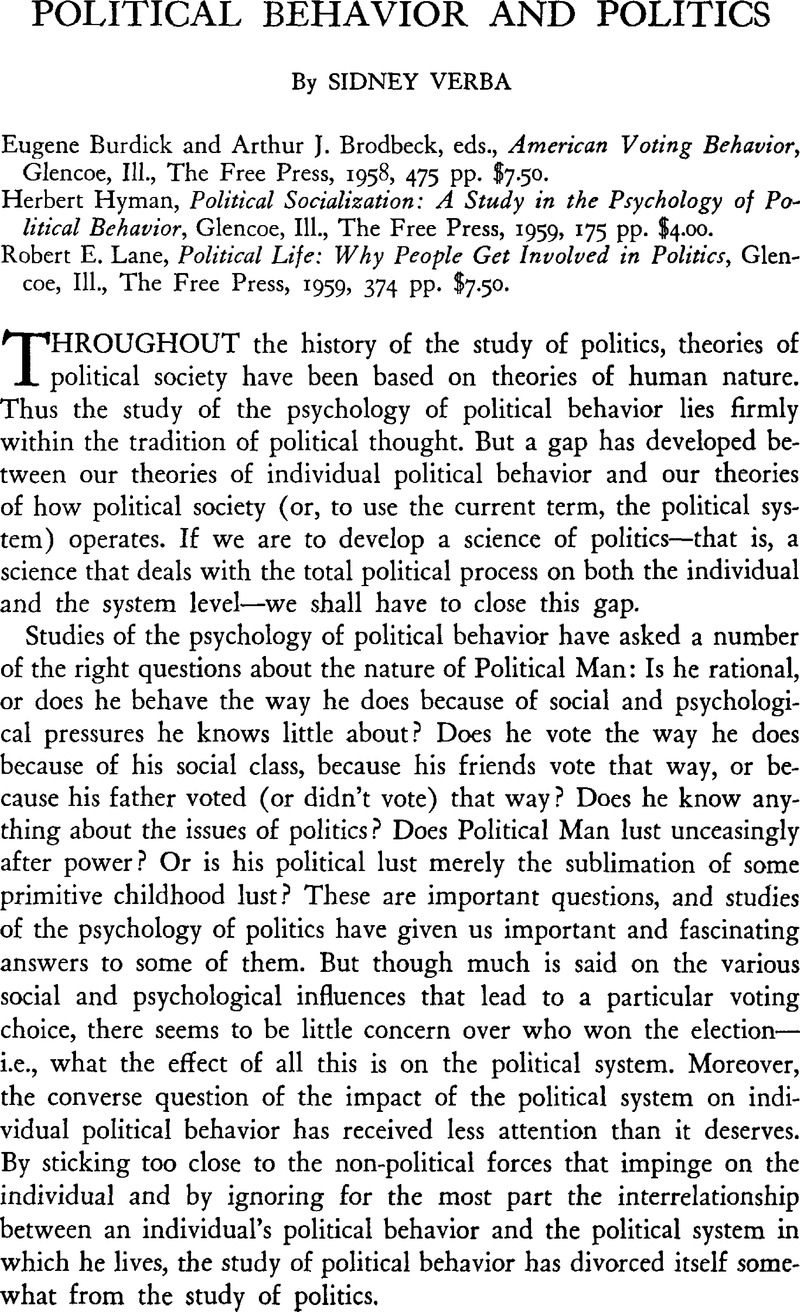Published online by Cambridge University Press: 18 July 2011

1 Lazarsfeld, P. F., Berelson, B. R., and Gaudet, Hazel, The People's Choice, New York, 1948Google Scholar; Berelson, B. R. and Lazarsfeld, P. F., Voting, Chicago, 1954Google Scholar; Campbell, Angus, Gurin, Gerald, and Miller, W. E., The Voter Decides, Evanston, 111., 1954Google Scholar; and Milne, R. S. and Mackenzie, H. C., Straight Fight, London, 1954.Google Scholar
2 Merton, Robert K. and Lazarsfeld, Paul F., eds., Studies in the Scope and Method of “The American Soldier,” Glencoe, Ill., 1950Google Scholar; and Christie, Richard and Jahoda, Marie, eds., Studies in the Scope and Method of “The Authoritarian Personality,” Glencoe, Ill., 1954.Google Scholar
3 In this connection, see March, James and Simon, Herbert, “The Cognitive Limits of Rationality,” in Organizations, New York, 1958Google Scholar, ch. 6. Their discussion of the difficulties of rational choice in administration is relevant to the problem facing the average citizen. If the administrator, whom we assume has more information and greater motivation to make rational choices, is limited in his rationality, we must not expect too much from the man in the street.
4 Though American Voting Behavior is based on one British and three American voting studies, there is, with the exception of the essay by Milne, almost no comparison of the material on British and American voting behavior.
5 Angus Campbell and Stein Rokkan, “Factors in the Recruitment of Active Participants in Politics: A Comparative Analysis of Survey Data for Norway and the United States,” International Social Science Journal, forthcoming.
6 See the essay by Parsons in American Voting Behavior on the subject of individual voting choices in a two-party system. In stressing the difference in the meaning of the vote on the level of individual choice and on the level of the political system, he makes a significant contribution to the understanding of the interrelationship between individual political behavior and the political system.
7 Luce, R. Duncan, “Group Voting Patterns,” in Burdick and Brodbeck, op.cit., p. 333.Google Scholar
8 V. O. Key, Jr., and Frank Munger, “The Case of Indiana,” in ibid., p. 299.